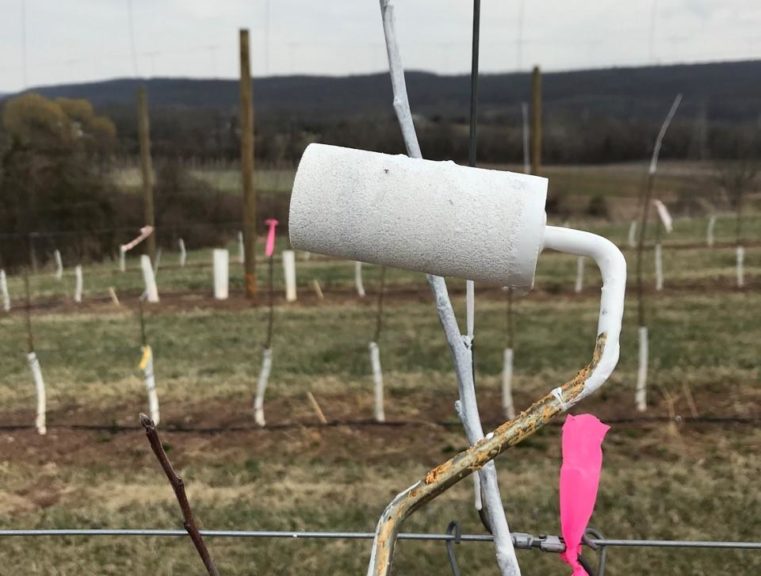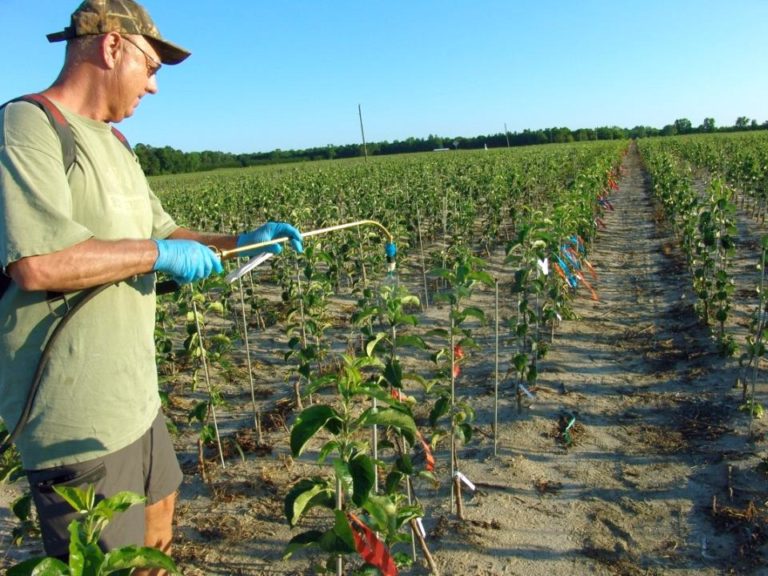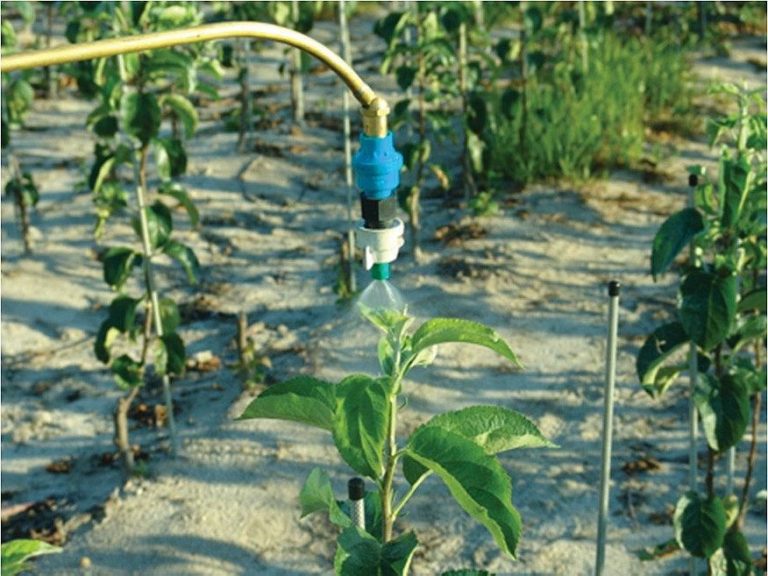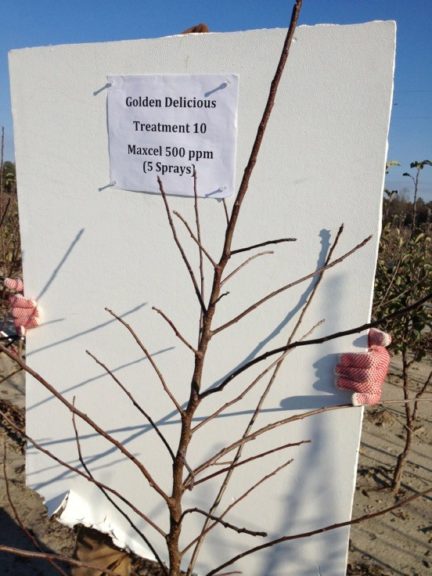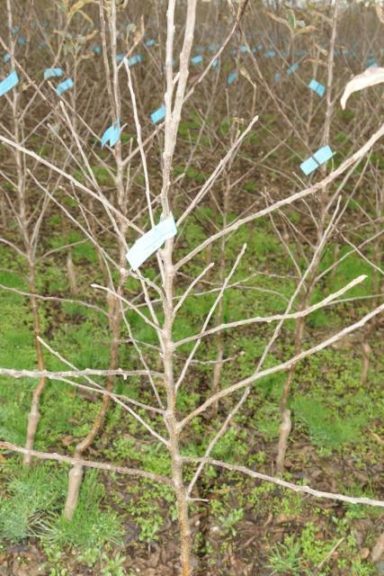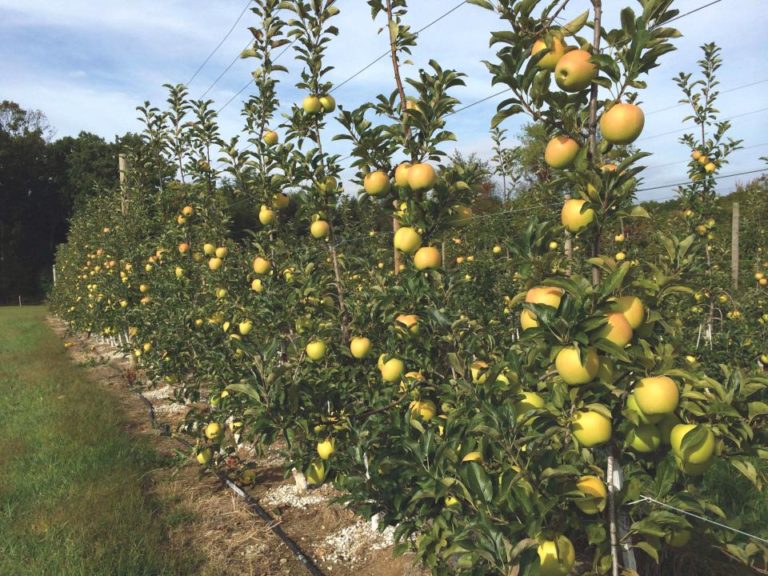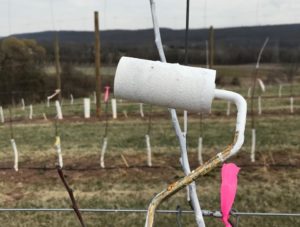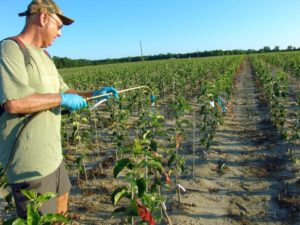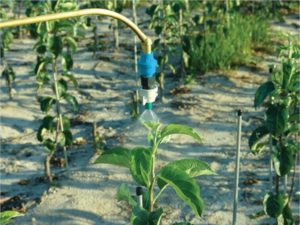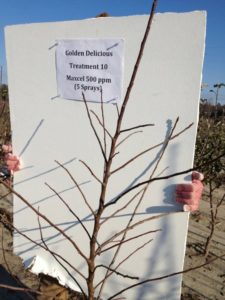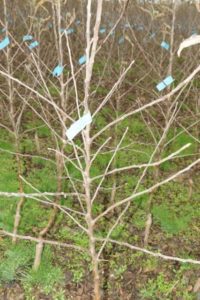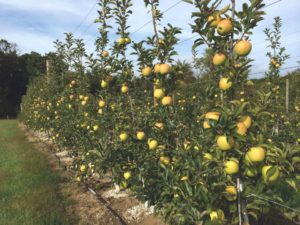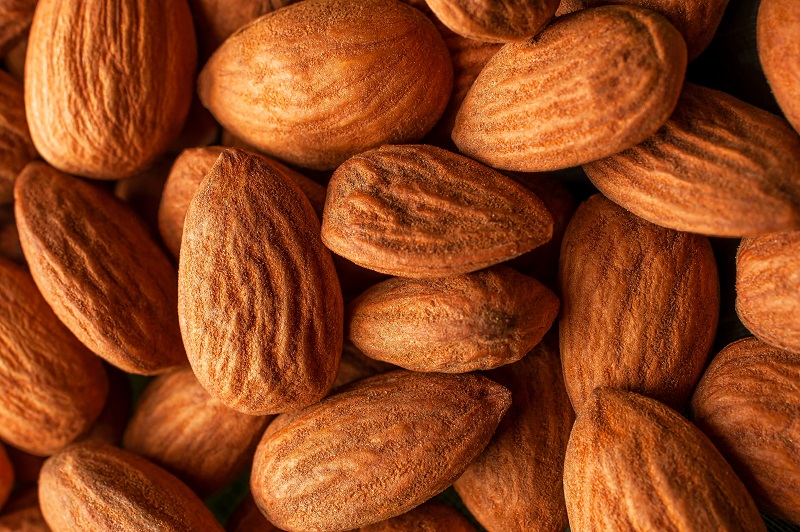How to Use Plant Growth Regulators to Create Branching Apple Trees
Apple orchard growers worldwide are quickly adopting the tall spindle apple production system.
This system uses full dwarfing apple rootstocks and high planting densities of 1,100 trees per acre or more. The key to the system is having high-quality nursery stock available that has 12 to 15 feathers per tree with caliper of ½ inch and standing about 5 feet tall.
The limiting factor has been the ability of the growers to purchase these high-quality nursery trees or to grow their own. These highly feathered trees ensure that an orchardist will harvest a significant crop ―200 bushels per acre ― the second year after the feathered apple trees are planted in a tall spindle system.
The second factor is that once the tree is planted in the tall spindle orchard, the adequate feathers need to be developed on the entire tree as it grows to maturity over the next three to four years. I am on a team that has been conducting research and demonstrations for the last eight years in commercial nurseries and on growers’ orchards to learn how to produce these highly feathered trees, and keep the feathers coming.
Utilizing plant growth regulators (PGRs) is the key. PGRs play a critical role when it comes to branch induction, which is the process of creating feathers. We have evaluated different materials, dosage, and timing, and we looked at mechanical techniques to enhance branching without compromising tree quality.
What PGR’s To Use?
Our best guidance is to use Gibberellic acid (GA4+7) combined with 6-benzyladenine (BA) or 6-benzyladenine alone. Our work in the U.S. and Chile, initially focused on MaxCel (Valent BioSciences) and BA and Promalin (Valent BioSciences), a mixture of BA and GA4+7.
In 2018, I conducted a nursery and an orchard trial with Exilis (Fine Americas, Inc.) and BA and Perlan (Fine Americas, Inc.), a mixture of BA and GA4+7. All these products have labeled uses for branching fruit trees. Refer to the current labels for guidance.
We have developed a fact sheet that details the multiple ways to use PGRs for branching, which includes rates and timing.
Recommendations for Mid-Atlantic and New England Orchards
Applications where PGRs can be used to increase branching on apple include:
- Nursery Trees
- First-leaf apple trees where the leader has no buds broken but just prior to bud swell. For example, newly planted nursery tree whips.
- Second-leaf apple trees where leaders have vegetative blind wood with no visible buds or branches.
- Existing young, tall-spindle or vertical-axis apple orchards with limited branching in the tops of the trees.
Even if growers plant whips, a PGR can be used in the orchard to induce branching. We have had good results with PGRs with several different application techniques, which include:
- Spray a PGR 10 to 14 days after bud break to green tissue on the un-branched leader from the tip down to the existing branches or to 24 inches above the soil line on 1-year-old trees.
- Apply the PGR in white latex paint with a roller to the leader at bud swell, before any green tissue is showing.
- Notch the leader at bud swell before bud break with a hack saw or double-edged clippers.
Note: On all the above, continue to treat the growing tips in the orchard with multiple applications of PGR as described in the nursery recommendations below to ensure branching all the way to the top. On older trees in the orchard that need branching, 1-year-old to 3-year-old trees planted in a tall spindle, we have seen good results with 6-BA PGR in an airblast sprayer targeted at the parts of the tree that need branching.
Recommendations for Nurseries
The key to branching trees is to start early and make multiple applications (3 to 5) of a PGR, depending on location. The same applies if a grower plants a whip tree, no feathers, in the orchard.
When the whip reaches 36 inches in height, treat the growing tip with a PGR. Repeat this application every 5 to 7 inches of new growth (7 to 14 days) for 4 to 5 applications.
Note: when you stop treating the growing tip, the tree usually stops producing adequate feather.





